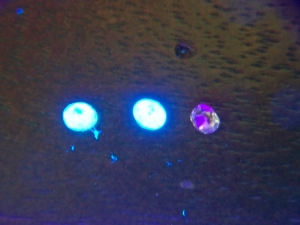Siamese Kitty
Brilliant_Rock
- Joined
- Feb 3, 2006
- Messages
- 909
Ok, several recent color threads have got me thinking. I know the issue of diamond body color has come up before, but I can't find the thread I think I recall reading a few years back. It was discussing something along the lines of how different "tones" (for lack of a better word) were considered less valuable or less desirable than others. Could someone please speak to this issue?
Clearly, from my countless posts about colorless stones, I prefer diamonds in the D-G range. However, my SIL has a 1 ct J diamond that has me stumped. It is magnificient-full of color, ideal cut, slightly moody, and when it shows it's tint, it is BROWN. I loved it so much I ordered 1cttw J earrings a few years back. When I received them, all I saw was an unattractive yellow. I had an I ering that was glorious in low light or sunlight, but again, showed yellow when in lighting that showed its tint-office, diffused, etc.
I know this is only my personal observation, but why would brown not be one of the most desirable "tones"? If you could escape the often dreaded yellowish tint, and have a stone that looked more creamy taupe, wouldn't you want to?
I hope this isn't a silly question! Thank you for indulging me.
Thank you for indulging me.
Clearly, from my countless posts about colorless stones, I prefer diamonds in the D-G range. However, my SIL has a 1 ct J diamond that has me stumped. It is magnificient-full of color, ideal cut, slightly moody, and when it shows it's tint, it is BROWN. I loved it so much I ordered 1cttw J earrings a few years back. When I received them, all I saw was an unattractive yellow. I had an I ering that was glorious in low light or sunlight, but again, showed yellow when in lighting that showed its tint-office, diffused, etc.
I know this is only my personal observation, but why would brown not be one of the most desirable "tones"? If you could escape the often dreaded yellowish tint, and have a stone that looked more creamy taupe, wouldn't you want to?
I hope this isn't a silly question!












300x240.png)